Download PDF
Proponents of practice consolidation say that it provides critical capital and economies of scale, but some ophthalmologists are pushing back on that narrative. After going solo, they say that their small practices are agile and lean, some focus on keeping overhead low, and they all keep job satisfaction high. They discuss why physicians are choosing solo practice, what it takes to open and grow a practice, and the challenges of staffing and burnout.
Why Are Doctors Starting Small Practices?
“There are two types of people who go into solo practice,” said Ho Sun Choi, MD. “Those who know exactly what they want, and those who have their backs against the wall and feel that they have no other choice.” Dr. Choi completed his residency in 2010 and opened his own comprehensive ophthalmology practice, Santa Clara Ophthalmology, in San Jose, California, in 2011.
Some clinicians want to practice on their own terms. “I’ve always had an entrepreneurial spirit,” said Deepak P. Grover, DO, who opened his practice, Blue Bell Eye Care & Surgery, 45 minutes west of Philadelphia, three years ago. “I had been part of a large group practice, but I had a feeling I may want to go solo one day. So I opened up a solo practice at a fraction of what it would have cost me to buy into the group.”
Some want more flexibility in setting their own schedule. “A big motivation for going solo was wanting to spend more time with my wife and daughters,” said Dr. Grover. And with just one traffic light between his office and home, he can stop by for lunch with them when schools are not in session.
Some want to provide a boutique experience. “I think a lot of physicians who are going from a larger practice to a smaller practice are looking to provide a boutique experience,” said Joy Woodke, COE, OCS, OCSR, who is Coding and Practice Management Executive for the American Academy of Ophthalmic Executives (AAOE). Ms. Woodke has helped several ophthalmologists start their own practices in her work for the AAOE’s consulting service (see “Academy and AAOE Resources”), as have Drs. Choi and Grover in their work for Independent Practice Partners, a consulting service that is geared toward solo physicians.
Some are unhappy with the previous practice. Sanjay D. Goel, MD, became a frequent participant in the Solo Eye Docs Google group while launching his practice, Goel Vision, near Baltimore in January 2020. Based on what Dr. Goel has seen on that forum, most doctors starting solo practices felt like they were in a bad situation at a previous practice, he said. “They felt that they had been promised a partnership, but it never happened, or they were never on the partnership track in the first place.”
“Private equity [PE] has been playing a role, too,” said Ms. Woodke. “For various reasons, including where physicians are in their career, a PE buyout isn’t always positive for everyone.”
Which subspecialists can succeed at solo practice? “By running a lean practice and maintaining a low overhead, I believe any subspecialist can do well in solo practice,” said Dr. Grover. Dr. Choi agreed, noting that cash-heavy, elective services are particularly well suited to solo practice.
What You Need to Ask Yourself Before Going Solo
Will you commit to being the business owner? “As a solo practitioner, you have to commit to leadership and to being a business owner,” said Ms. Woodke. It takes somebody with an entrepreneurial spirit, added Dr. Goel, “somebody who really wants to create something from scratch that they can call their own and not be afraid of all the hard work that it involves.”
Are you prepared to get into the weeds? Dr. Grover, for example, handles a lot of his practice’s nonclinical work. He sees patients four days a week and uses Fridays to catch up with paperwork, including payroll, accounting, and taxes. Now that he has a thorough understanding of these back-end processes, he said that he can—if he so chooses—start delegating tasks, confident that he’ll be able to spot if anything is going awry.
What’s your vision? “Identify what vision you have for your practice and what culture you want to build,” said Ms. Woodke. That culture and that vision should start at the top and then permeate throughout the practice, she said. “But you can’t just think about opening day, you also need to determine your strategic, five-year plan.”
Can you fill an unmet need? If you can find a location where you think you can fill an unmet need, and if reimbursement is available for meeting that need, then you have a good opportunity to open a practice, said Robert F. Melendez, MD, who opened a boutique-style practice offering LASIK and refractive surgery in Albuquerque, New Mexico, late last year. He named it Juliette Eye Institute, in honor of his mother, who became blind when he was young. “She was the reason why I became an ophthalmologist.”
Is your plan viable for your area? Some locations, especially rural ones, may present particular problems for the small practice model, said Ms. Woodke. “There could be slower growth, limited referrals, or payer contracts that undermine profitability. You need to do both a comprehensive market analysis and a competitive analysis, and then develop a realistic business plan.”
Are you ready for solo practice? It is quite rare to start a practice right out of residency, said Dr. Grover, “and this is partly because of financing—it is hard to get a loan without three years of good tax returns.” Also it can be important for clinicians to have time to learn about the business of medicine and their strengths and weaknesses as leaders before opening a practice, said Dr. Goel.
What to Do Before Opening Your Doors
The process of starting a practice can seem daunting. Some of the principal tasks are listed below.
Develop a timeline for your to-do list. “When I talk with clients about opening a new practice, we discuss all the different things that they need to do,” said Ms. Woodke. Once you’ve decided when you want to open your practice, you can work backward from that date to develop a timeline for your to-do list. “I use the analogy of Thanksgiving dinner,” said Ms. Woodke. “You want everything to come out of the oven at the same time, but you might need to start prepping one part of the dinner one week ahead and others one hour ahead.”
Keep to tight deadlines. You need to be realistic about how long each task will take and then make sure you stay on schedule, said Ms. Woodke. “This requires excellent project management skills.”
Get on insurance panels and obtain hospital privileges. Once you have a location, you can start applying to get on insurance panels and obtain hospital privileges. “Don’t make the mistake of waiting until you have finished your build-out,” said Dr. Goel. “Start applying as soon as you get your space.” It took Dr. Goel three months to get on a panel for cataract surgery, and it took Dr. Melendez from two to six months to get onto his panels.
Ideally, you should start the insurance credentialing and hospital privilege process at least six months before you plan to open, said Ms. Woodke. “Once you get approved by a payer, you’ll receive a contract along with a fee schedule. You will need to spend time learning how to interpret their schedule and how to use it in drawing up your own fee schedule,” she said. “When you determine your ‘usual and customary’ fee for a service, you want to make sure that your billed amount is at least as high as the amount you get paid in your best payer’s contract.”
Get Medicare approval for your ASC. Credentialing isn’t the only approval process that you need to plan for. For example, when Dr. Goel started the build-out of his second office, he also started developing an ambulatory surgery center (ASC) next door to it. Getting this approved by Medicare can be a long process, he said. “We’ve been in that space for a year, and we still haven’t gotten Medicare approval for the ASC.”
In some states, you may need to obtain a certificate of need (CON) before opening or expanding a medical facility.
Set up your EHR and practice management systems. Ms. Woodke recommends allocating about six months to obtaining an EHR system and getting it ready for opening day. “Some practices try to push EHR implementation through in 30 days but then find that processes are missing and that the EHR system doesn’t efficiently serve their clinic’s workflow.” For both the EHR system and the practice management system, there are key decisions—such as how templates and libraries will be set up—that the physician should be involved in, she said.
Hire staff and get professional help. One of the biggest potential problems is not having the right people in the office to support you, said Dr. Goel. For example, Dr. Melendez regrets not having a biller on staff early on as he would have wasted less time following up on rejected claims.
But hiring the right staff can take time. “I like to hire the passion and teach the skill, but even that is difficult right now,” said Dr. Goel. His practice recently posted a job opening for a front desk person. They received 45 applications and set up 12 Zoom interviews—but only four of the 12 applicants turned up for their interview.
Thinking through what needs to be done before staff members are hired (e.g., developing an employee manual) and after they are in the office (e.g., training them how to use the EHR system) will help you to develop your timeline. Ideally, you would want to be able to spread out any staff training, said Dr. Goel. For example, he noted, EHR learning modules may be easier to digest when consumed over several sittings.
Dr. Goel also suggests that you contact a banker, an accountant, and an attorney. They can help you to set up the financial and legal side of your business properly, which will help you to manage risk, he said.
Put policies in place. The bad news: From compliance plans to business forms, your practice will need to put reams of paperwork in place. The good news: “You should never have to start from scratch,” said Ms. Woodke. “AAOE members can go to the Practice Forms Library [see “Academy and AAOE Resources”] and see if there is a template there. If there is, they can use this as a starting point and edit it for their practice. If there isn’t, they can visit AAOE-Talk and see if anybody has a template that they can use.” Other online forums, such as the Solo Eye Docs Google group, also can serve as a resource.
Learn from your peers. “Go and visit some solo ophthalmologists,” said Dr. Melendez. “Find a couple in your subspecialty and go and pick their brains. And once you’ve made your decision, don’t ever look back—you’ve got to keep moving forward.”
Growing Your Solo Practice
If business is slow, make the most of that downtime. Early on, when things are still slow, the physician and staff should make a special effort to develop good habits, said Dr. Grover. “This will be harder to do once your practice gets busy.” And if your practice puts smooth processes in place, it will be well positioned to thrive when it gets busier.
Be committed to knowing the nitty-gritty. Even if you hire an excellent manager to run the practice, you must be prepared for when they move on, said Ms. Woodke. “Staff may leave you, but you will continue to run that practice based on the culture, the vision, and the mission.”
Market your practice. Do you go direct to consumers or do you cultivate doctors as referral sources? Dr. Goel’s practice does both. “As a practice that performs laser refractive surgery, we have a healthy marketing budget. We do a lot of radio and Google ads, we do SEO [search engine optimization], and we’ve recently tried spending money on Facebook,” said Dr. Goel.
Dr. Melendez’ practice makes an ongoing investment in building its brand. “I hired a marketing director who is responsible for all marketing outreach and educational materials,” he said. “And we hired a company to design our website and logo.”
Invest in your website. “Your website is critical for enabling patients to find you,” said Dr. Goel. “Having a robust website with content that ranks high in SEO takes a long time to build, so you have got to start on that as soon as possible.”
And if you are buying advertisements that drive people to your website, you want to make sure that prospective patients aren’t turned off by an underwhelming web presence.
Encourage patients to review your practice. Dr. Goel uses QR Codes in the office to capture reviews. “Patients use their smartphone to click on the QR Code, go directly to our Google review page, and leave a review while still in the office,” he said. “If you wait until they have left the office, the response rate goes down dramatically.” Dr. Goel has hired MDidentity to help capture reviews after patients have left the office.
Get to know the referring doctors. “You have to be very comfortable in going out to meet referring doctors,” said Dr. Grover. “Always send a letter and make a call after a referral, and always be very respectful and cordial with any referring doctors.”
Explore networking opportunities. Getting involved with your state ophthalmology society is a great way to make yourself known in your local community, said Dr. Goel, who has been active in the Maryland society for 20 years. “I’ve been a member since I was a resident, and it has been a great way to meet colleagues and make friends.” (Learn more about your state society at aao.org/statesocieties.)
Dr. Goel also is involved in a local business networking group. “I’ve started getting to know some of the business CEOs in town, and that has helped me to build my brand, my name recognition, and referrals.”
Don’t be afraid to ask for help. There are extremely supportive communities within ophthalmology, said Ms. Woodke. AAOE members can check AAOE-Talk each day, where they can seek advice and learn about the latest hot topic. “One day they may be discussing staff shortages; the next, which automated patient reminder system has reduced no-show rates,” she said.
Similarly, the Solo Eye Docs Google group provides a valuable resource, said Dr. Goel. “For example, when you’re planning your build-out, you can send the group your floor plan, and everybody will chime in with their advice.”
See what help industry offers. Dr. Goel suggests considering whether your vendors can help. For example, one of his equipment vendors has a practice development team that offers advice on improving the patient’s experience in the clinic. “You can also talk to a company’s local reps, who are trying to sell you equipment,” he said. “They may be happy to advise you on, for example, lanes and lane dimensions. Over many years, they have seen what has and hasn’t worked at other practices, and they can be a great resource.”
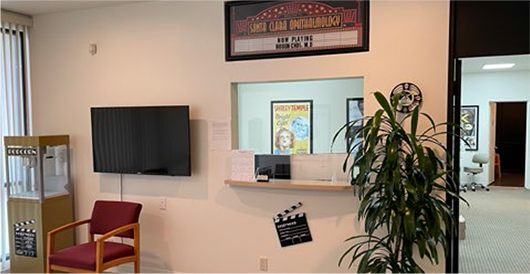 |
|
SANTA CLARA EYES. Dr. Choi’s office décor celebrates his love of film, with movie posters (each with “Eye” in the title), a popcorn machine (bottom left), and a theater marquee (“Now Playing: Ho Sun Choi, MD”).
|
Why These Clinicians Think Their Small Practice Size Gives Them an Edge
While solo practitioners employ a range of practice models, Drs. Choi, Goel, Grover, and Melendez believe that their practices’ small size gives them some competitive advantages.
By getting into the nitty-gritty, solo practitioners can keep down the overhead. “I am invested in day-to-day activities such as scheduling patients and following up with insurance,” said Dr. Grover. “If you understand and own all the numbers, you can keep your practice lean and efficient.” And with low overhead, you have the freedom to spend more time with patients, he said.
Dr. Choi has a practice overhead of just 30%, making it an outlier. This is possible because he employs only one staff person, who works the front desk, and he does everything else himself. “Human resources [HR] is often 25% of a practice’s expenses, but it is 6% for me,” said Dr. Choi. He said that his use of technology and automation helps to make this feasible. “For peak efficiency, you need to be paperless, but you also need to customize your EHR for your practice and pick the right apps. Medicine is lagging behind other industries—we need to do more to integrate technology into health care.”
An engaged physician has more control over staff and processes in a small practice. “In a smaller practice, you are able to really control processes and make sure that the practice is running smoothly,” said Ms. Woodke. In larger practices, physicians may have more limited control of staff, said Dr. Goel. At his previous employer, although staff worked for him, they were controlled by the HR department, which was in a different city. “While I could make a complaint, I had limited control,” he said. “In my current practice, by contrast, I can hire people who are doing the things that I want them to do, not what corporate wants them to do. If it is not working out, we part ways.”
A small staff can communicate more efficiently. “A small practice can stop everything and have a quick staff huddle to ensure that everybody is on the same page,” said Ms. Woodke. In a larger practice, communication can be more cumbersome: “You might have to go through the chain of command and text the office manager,” said Dr. Goel.
Small practices can be more agile. In a solo practice, said Dr. Melendez, decisions don’t need to be made by committee. This means that changes can be made swiftly. “If I need to make a modification, I can make it immediately,” said Dr. Choi.
And once a decision has been made, efficient communications within a small team make it easier for the practice to pivot. “This is a big advantage when, for example, you are implementing a new EHR system or are rapidly responding to the COVID pandemic,” said Ms. Woodke. Furthermore, a smaller staff can make it easier to maintain a culture of teamwork where everybody is pulling together, said Dr. Goel. “When we have an issue that needs to be rectified, we can brainstorm together. I make the staff part of the solution,” he said.
Reduced waiting times at some solo practices. When Dr. Grover worked in a larger practice, the schedule was chronically overbooked, resulting in long patient waits. “The stress of that was eating and gnawing at me,” he said. “Now that I am in charge of the schedule, we don’t do any double-booking.” His practice schedules three patients an hour, with no overlap, and he sees 22 to 25 patients per day, which—given his low overhead—is all he needs, said Dr. Grover. “We are almost always on time. If a patient has to wait three minutes before I walk in the room, that is a long wait—but I’m always fine-tuning our schedule, trying to make it better.”
More time with the physician at some solo practices. When solo practices are able to reduce their overhead, they don’t have to see as many patients each day to cover their costs. Like Dr. Grover, Dr. Choi sees about 25 patients per day. “With new patients, I can schedule 25 to 30 minutes of face-to-face time; 20 minutes for a return patient,” he said. “I do all the testing, the talking, and the treatment.”
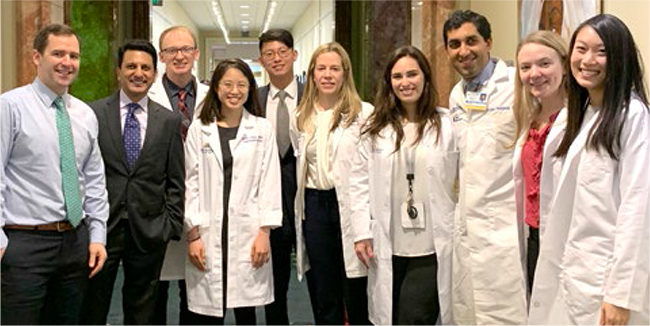 |
|
NETWORKING. Engaging in state advocacy efforts is a great way to get your name out there, said Dr. Goel, pictured above (second from left) at the Maryland State House.
|
Staffing Issues in the Small Practice
Suppose you lose two staff members? That can be a loss to any practice, said Ms. Woodke. “But it is a much bigger loss to a small practice with four staff than to a larger practice that is better able to absorb those transitions.”
Cross-training is critical. In a solo practice, each staff member should be able to step into any role, said Dr. Grover, whose practice has three staff members. While each has a primary role—one at the front desk, one as a technician, and a third to help with insurance claims—everyone can do each other’s jobs. Dr. Grover said that his practice takes a family approach, where people pitch in wherever they are needed. “If I’m closest to the phone, I will pick it up and schedule a patient, and I do so on a daily basis.”
While cross-training can increase day-to-day practice efficiency, it also means that you are not necessarily reliant on just one person, said Dr. Goel. This can ensure continuity if a staff member has to leave, said Ms. Woodke. “Furthermore, cross-training can be important to staff members, because it gives them a chance to grow,” she said.
Hire staff who are willing to cross-train. “Look for people who want to grow and who want to learn about every part of the practice, not just what they are being hired for,” said Ms. Woodke.
Solo Practice and Physician Burnout
You might be your own boss, but are you also your own slave? “It’s hard to work on your business when you’re working in your business,” said Dr. Goel. During office hours, you are focused on seeing patients, he explained. “This means that the additional work needed to develop and grow your practice is done outside of office hours, and this is where the work-life balance gets jeopardized.” To minimize this risk, you need to have a competent team helping you to get jobs done, and you might also need to let some things go, he said. “Accept that there might be some days when not everything gets done; otherwise, you could work until 11 o’clock every night.”
Autonomy can reduce burnout. Dr. Grover has been experiencing less burnout since he opened his own practice. “Burnout comes from not having full control,” he said. “I was employed for eight years in two large practices, and I felt the burnout there. I never stopped loving ophthalmology, but the burnout came from always falling behind schedule and constantly getting complaints.” Now that he has the autonomy to set his own schedule, work no longer feels “like I am constantly behind in a marathon, but rather enjoying a combination of jogs and quick sprints, where I am excited to be at work each day as I have control of my run.”
The Solo Experience
For eight years, Dr. Grover was an employee who couldn’t quite commit to opening his own practice. “The biggest challenge is telling yourself that you can do this. There is a fear factor, and there always seems to be a reason to delay—whether it is family commitments or a mortgage. But once you’re over that challenge, you’ll wish that you had done it sooner,” he said.
Dr. Goel concurred. “I enjoy looking back and seeing what has been accomplished since we opened 18 months ago. And if we can survive the last year and a half, we can survive anything!”
Meet the Interviewees
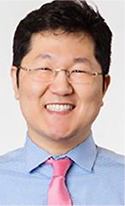 HO SUN CHOI, MD HO SUN CHOI, MD
Santa Clara Ophthalmology
“When I decided to open a practice, there was nothing special about me—I had no money and no experience. In blogging each step of the process, I wanted to convey to people that if I could do it, they can do it.”
Opened: March 2011.
Subspecialties: General plus medical retina.
Office location: San Jose, Calif.
Staff: One front-desk employee.
URL: www.sceyes.com
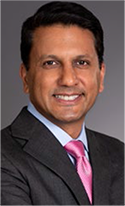 SANJAY D. GOEL, MD SANJAY D. GOEL, MD
Goel Vision
“I started my practice when I was 50, and people were surprised at that. I could have just coasted through the last 10 years of my career and been done. But I wanted to build something.”
Opened: January 2020; second office, July 2020.
Subspecialties: LASIK, small incision lenticule extraction, and refractive cataract surgery.
Office locations: Towson and Columbia, Md.; both near Baltimore.
Staff: Five—three technicians, an office manager, and a front-desk person.
URL: www.goelvision.com
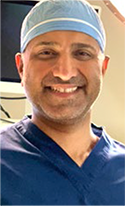 DEEPAK P. GROVER, DO DEEPAK P. GROVER, DO
Blue Bell Eye Care & Surgery
“When I was in training, nobody ever spoke about solo practice. My goal is to educate the residents and physicians who don’t realize that it’s even possible. I tell them that I’ve been open for three years, and I am still excited to come to work every morning.”
Opened: September 2018.
Subspecialties: Refractive cataract surgery; minimally invasive glaucoma surgery; and neuro-ophthalmology.
Office location: Blue Bell, Penn.
Staff: Three—one technician, one biller, and one front-desk person.
URL: www.bluebelleye.com
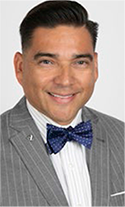 ROBERT F. MELENDEZ, MD ROBERT F. MELENDEZ, MD
Juliette Eye Institute
“I think patients are tired of being in a large system and being treated like a number—they want to be treated like a person, and I wanted to offer them that more personalized care setting.”
Opened: November 2020.
Subspecialties: LASIK and refractive cataract surgery.
Office location: Albuquerque, N.M.
Staff: Eight—one practice administrator; one surgery coordinator; three technicians; one marketing director; and two part-time front-desk staff.
URL: www.julietteeye.com
|
___________________________
FINANCIAL DISCLOSURES. Dr. Choi: Independent Practice Partners: O; OMIC: C. Dr. Goel: Carl Zeiss Meditec: C. Dr. Grover: Independent Practice Partners: O. Dr. Melendez: Alcon Labortories: C; Social Media Page Creators: O. Ms. Woodke: None.
See the disclosure key at www.aao.org/eyenet/disclosures.
More at AAO 2021
Times accurate at time of press. For the latest information, check aao.org/mobile, which is scheduled to launch in mid-October.
Yes! You Can Still Start a New Private Practice (event code 214). Senior instructor: Debra L. Phairas. When: Saturday, Nov. 13, 9:45-11:00 a.m. Where: Room 206.
Academy Café: Alternatives to Traditional Group Ophthalmology Private Practice: What Are My Options? (Sym54). Chair: Robert E. Wiggins, MD, MHA. When: Saturday, Nov. 13, 11:30 a.m.-12:45 p.m. Where: Room 271.
Starting Your Own Solo Ophthalmology Practice in 2021: Why and How (458). Senior instructor: Howard Chen, MD. When: Sunday, Nov. 14, 3:45-5:00 p.m. Where: Room 203.
Facing Down Retirement: Exit Strategies for the Solo Ophthalmologist (630). Senior instructor: Lawrence Geller, MBA, MS. When: Monday, Nov. 15, 11:30 a.m.-12:45 p.m. Where: Room 206.
Research and Revenue: Clinical Research in a Small Practice (613). Senior instructor: Heather Modjesky, COE. When: Monday, Nov. 15, 2:00-3:15 p.m. Where: Room 206.
Employment Law Basics for the Small Ophthalmology Practice (269V). Senior instructor: Jill S. Garabedian, JD. When: On demand. Where: Virtual.
|